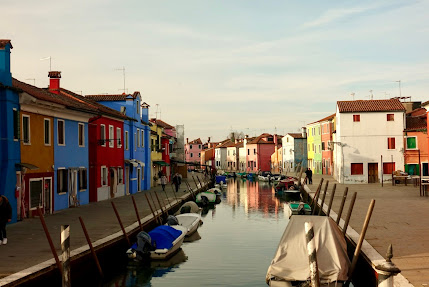The Stages of Italy
When going to Italy, the Colosseum stands out as the quintessential tourist attraction. As a result,
this was what I most imagined when I signed up for this trip to Italy. Upon our arrival in Rome on the
first night, Alessio, our guide made sure to show us a glimpse of the Colosseum from far away. I must
say, it was just as grand as I imagined. It lived up to all of these big expectations. The next morning when
we had our guided tour of the Colosseum, while walking around, I envisioned its past of busting crowds
gathering to watch elaborate theatrical performances or gladiator combat.
The prevalence of arenas was not just exclusive to the Colosseum in Rome. We were lucky to be able to
visit the ancient city of Pompeii. While walking into the city we heard a tourist belting a song which
we first greeted with confusion. Our guide jokingly told us that tourists like to show off their skills and
get their five seconds of fame at the main amphitheater in the city. When we walked into this amphitheater
I could understand the appeal. This is one of the earliest permanent amphitheaters in the world. By walking
through I could feel the history coming to life for me.
These site visits were perfect timing seeing as we were reading our second play of the trip for class that
night. We read La Lena, a satirical play written by Ludovico Ariosto during the Italian Renaissance.
La Lena explored themes such as prostitution and social class and is a very good example of Italian theater
at the time. Through our visit to Pompeii and the Colosseum, we were able to see what a large stage that
housed these plays might look like.
Ariosto’s play had a commentary on prostitution which spoke to its prevalence at the time. The brothels in
Pompeii were at the center of common life. A lot of the geography was centered around these. For example,
there is a stone penis carved into the street that points to the brothel. (As shown above). For me, this really
showed the intersection of art and societal norms. The emphasis of these brothel spaces in person and the
prostitution shown in the play really enhanced our understanding of societal dynamics during the
Renaissance. Another theme in Ariosto's work was social class. This was seen in the Colosseum where
spectators were divided by social class. Specifically, women were delegated to the very top of the arena.
This was where the seats had the worst views because they were furthest away from the stage. This relates
to the way that female characters were spoken to in La Lena They were not as respected as the male characters.
In fact, one of the central characters in the plot, Licinia, is never actually depicted on stage. This
arrangement based on social class was the same for the amphitheater in Pompeii. Different social
classes sat in different spots. However, women were not divided by class, they were all grouped in one.
Showing that no matter where a woman comes from, she is still viewed as the lowest class.
Throughout these two site visits, we saw how women were deemed the lowest class. Women were also framed as commodities by wealthy aristocrats. By reading La Lena we were able to see the tangible evidence of everything that our guides were telling us. The author was able to put this transactional nature of relationships between men and women and the prevalence of social class into his dialogue.
I am grateful for this opportunity to read about social status and thoughts on women during the Renaissance in tangent with viewing the actual sites in which this happened. This made it an invaluable experience for me.







.jpg)
Comments
Post a Comment